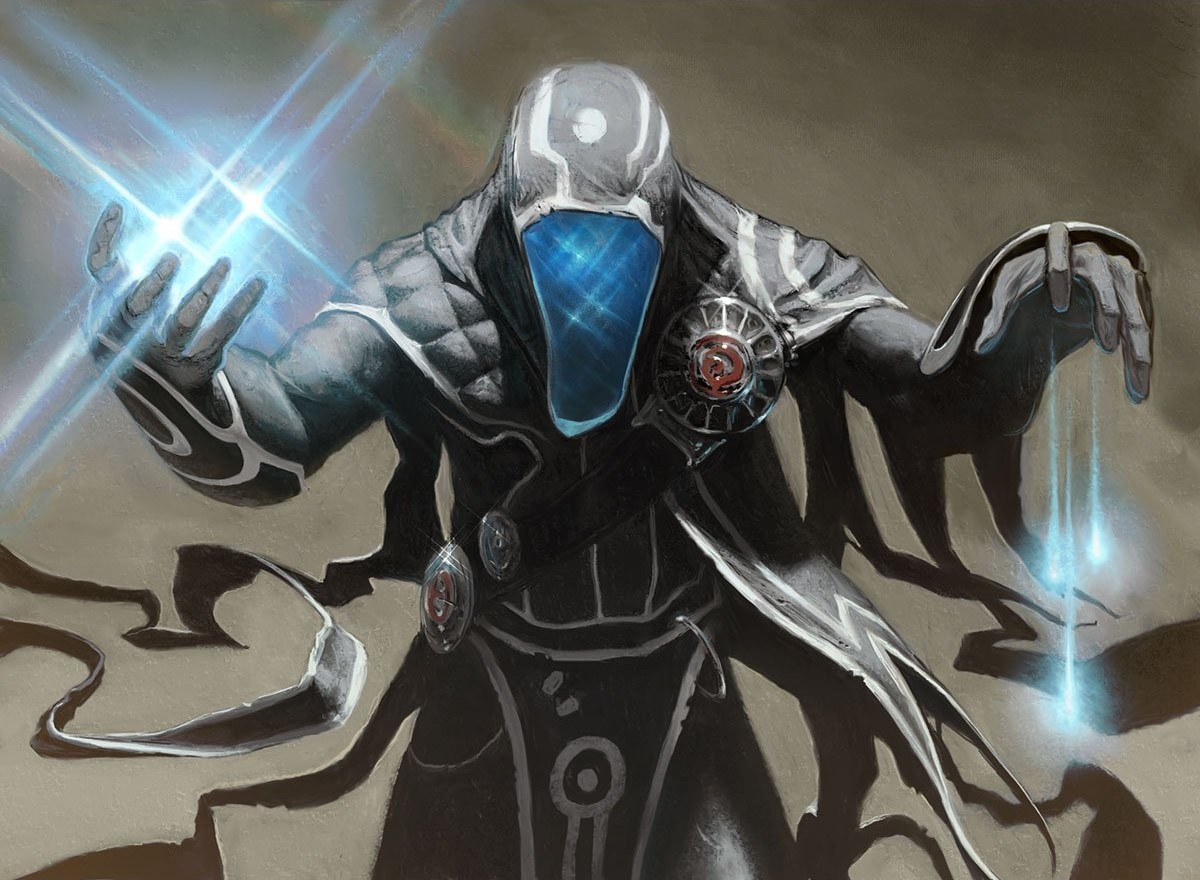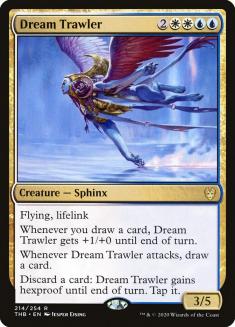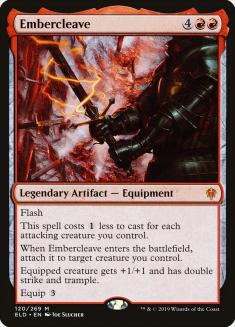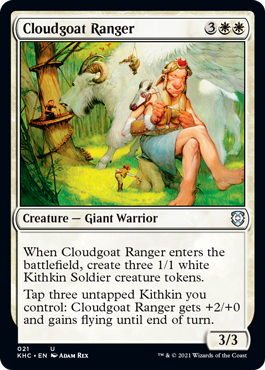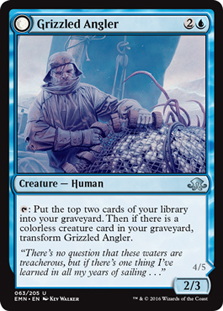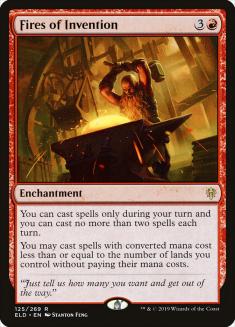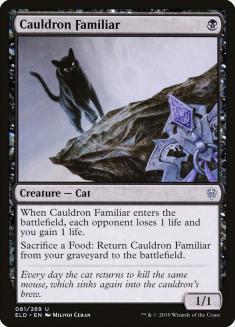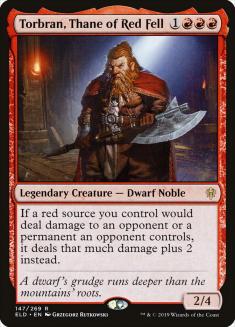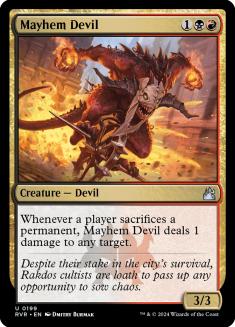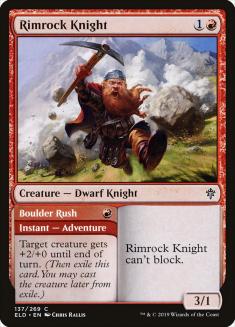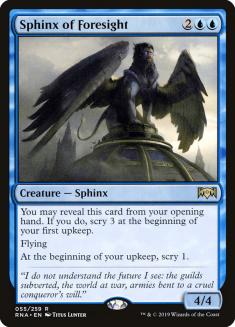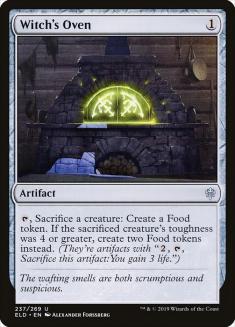I’ve worked with Andrew Elenbogen preparing for Mythic Championships and Players Tours for a while now. We often agree on assessing individual cards and decks, but when it comes down to registering a 75 for an event, we often come to a core disagreement.
I err on the side of range. Andrew errs on the side of mastery. If you wanted the less charitable interpretation of both sides, I err on the side of hoping to catch metagame lightning, where Andrew errs on the side of historic inertia.
I want to make the counter-argument for range, but as always I want to take on the nuance as well as the side of being correct. In the end, having a wide range is going to be better than having a narrow one. Here is how to invest in having that.
The Cost of Good Range
At the end of any given day, Andrew is certainly going to be right some of the time. Or even a lot of the time. Count this as a fault on my part, that I’m too future-looking in the “it’s all one big session” school of Gerry Thompson.
It’s 10am on Saturday when decklists are due for the Open. You’re deciding between Azorius Control and Mono-Red Aggro. That snapshot of your skill with each deck you could choose matters, and nothing you can do at that time changes it. In that instant, Andrew is going to be right a lot more. Playing a good deck you’re bad at playing is worse than playing a reasonable deck you are good with. And if you don’t know your skill level with a deck, guess what – the answer is probably “not good.”
It’s 11pm on Sunday a week before that Open. You see a bunch of new decks and are wondering about Sultai Midrange. Things are fuzzier. With some repetitions you can probably get good with that deck, but how many is that? Is Sultai Midrange even good or did people just get lucky with it this weekend? Will it be good once everyone knows the deck exists?
That’s part of why Andrew biases the way he does. Not only does learning the deck take time, so does learning if it’s good.

Sure, it builds character to play the Sultai deck and learn the answer yourself, but character doesn’t give you match points next Saturday.
That’s the struggle with how Magic Organized Play is structured right now, and it has been one of my bigger frustrations the last few years. There are too many events, and they all matter a lot. Every Saturday is a snap second choice, every Sunday a precipice where you have to choose a path for your last week of testing.
Right now, though?
What event do you have next Saturday that is make or break for your future Magic status? What event does anyone have?
Listen to Jake

When you start building a new set of your range, you are going to lose more than you are used to.
Tip 1: The wins when expanding your range aren’t actual match wins.
Your first wins are going to be immediately recognizing what you did wrong after you did it.
The big wins are going to be building the broad understanding of direction that lets you make those decisions right before seeing the consequences of making them wrong.
That’s what range is: knowing the underlying principles that you can then derive all your turn by turn plays from.
Take the Time
Tip 2: When you aim to build range, set your goal and lock in for a long duration.
Through my twenty or so years of playing competitive Magic, there are two times I can distinctly point to where I went through an extreme level-up.
The first time was a PTQ season where I locked into Kithkin with the goal of learning the deck inside and out from the first weekend. Even if the most valuable lesson I learned was “how I lost to Cryptic Command so I can change decks and beat people with it,” I learned a lot.
The second has been the last four years just jamming my way through Limited format after Limited format the right way. That’s a story for another time, but I put in the effort and it shows.
Start with a clear and distinct goal. Choose a deck and a format. Push ahead and just keep jamming that. I’m not talking two Magic Online Leagues. Or even an extra weekend Challenge. Just play the deck for a solid week or two. Take it from Bronze to Mythic. Really work with it.
Tip 3: The best place to start building range is with a deck you know is good, yet know you aren’t good at.
This comes down to correlation and causality. One of the hardest parts of Magic is that you can lose because you did something wrong, and you can lose regardless of whether you did something wrong.
If you’re trying to build range, you want to be put into as many situations as possible where losing is your fault so you can directly understand why you lost and what you’re going to do better next time.
If every analysis is muddled with “my deck is bad,” you’re going to take forever to get anywhere. If you spend half your time figuring out if there’s actually correlation, you’re going to take way too long to figure out causality.
The current Theros Beyond Death Standard format is a bit of a goldmine for this process. There are many absolutely solid decks you can choose from across the metagame spectrum. They aren’t faultless, and you will certainly have your share of “this matchup is bad and that is why I lost” with whatever you focus on, but with the wide metagame that’s only a small fraction
Some Aggro Is More Aggro Than Others
Within the obvious goals of learning aggro, midrange, or control, which deck should you choose for this process?
It depends. The nuance goes deeper.
Not all aggro decks are the same aggro deck, executing the same plan. Even ones that look similar aren’t really the same.
If you picked up Standard Mono-Red Aggro with the intent of getting better at aggressive decks, you’re going to be learning skills for a middling aggressive deck. If you wanted to learn about precision life total management and balancing cards against damage, the things often associated with more traditional Mono-Red Aggro, you’d probably be better off picking up Rakdos Sacrifice.
That said, this almost doesn’t matter unless you’re working it out backwards. If you already know the format and want to learn about why you can’t win with Mono-Red Aggro, you can understand it’s an Embercleave deck. From there, maybe you can know if you were just playing it wrong and know how to play similar decks, or if getting in the games will actually expand your range.
Or maybe if you felt comfortable with Pioneer Mono-Red Aggro, felt like you knew red aggro, but just don’t get the Standard version, you can realize they aren’t the same and your range is just a subset of all the red decks out there.
But if you’re just starting from little or no context, just the knowledge you’re losing with Mono-Red Aggro and always lose with red aggro but the deck wins a lot, it really doesn’t matter. You can figure out what the lessons you learned are after you actually go through and learn them, and later fill in the gaps as formats roll past.
Watch, Then Do
Tip 4: When in doubt, find someone good and watch them.
Learning to play each individual archetype involves learning a lot of new approaches to a game. This is made really difficult when you shuffle up and draw some cards, and all your existing knowledge and instincts are the first things that come to mind.
Thinking about each play without good background context is exhausting. Not even the best players ever really do that. They think, but they’re thinking about a very trimmed-down decision tree based on what they know is probably right. Even if you’re thinking well each time, you’re bound to miss a lot of options because you just fall behind thinking about so many things. The best trick to seeing these new lines you might not notice at first is just to watch someone else make them.
When you go looking for the right source to watch, stay away from people just streaming the new hotness. That kind of stream has rewarding merits in the week-to-week hustle, where you can watch them play ten matches at double-speed and get a rough idea of how good a deck is while simultaneously playing a different one in matches yourself.
But if you’re trying to build range, watch the person who has a week of streams with the deck. Don’t watch the MPL member’s first stream with the deck; watch their second. Take note of the things they do frequently, the things they could do but don’t, and what the games they win look like.
Then actually play games. If you already have the range to play an archetype you might be able to pick it up through replays, but when you’re learning the decisions there just isn’t anything quite like actually making them.
Who knows, by the end of it you might learn enough to know when the people you watched at first were wrong.
Where to Start
Since I noted this Standard format as such a good place to explore some range-expanding options, it seems best to close out listing what you can learn to expand your range with all the best decks in the format.
If you want to learn about true mana efficiency versus fake mana efficiency, opening hand quality, and maximizing early resources for attacking traction, that’s Mono-Red Aggro. In simpler terms: your decision is always deciding between ignoring what they can do and possibly running into a brick wall or letting them dictate bad exchanges, or playing it safe when you aren’t necessarily the best deck in a longer game. It will help you with future midrange Mono-Red Aggro decks, like anything that played Hazoret the Fervent or Glorybringer.
If you want to learn the important of your opening hand, play Jeskai Fires. Seriously, the deck is really good but your hands play themselves once they leave the mulligan station. It will help you with a lot of older-format combo decks.
If you want to learn how to do precision damage, rapidly switch from defense to killing your opponent without a clear card advantage switch flipped, or how to leverage engines to beat individually more powerful cards, or just generally figure out how to juggle a lot of fiddly pieces in conjunction with a bigger plan, play Rakdos Sacrifice. This will help you with every older format combo deck that Jeskai Fires didn’t, as well as burn-based aggro decks and some tempo.
If you want to learn about how not to destroy your own midrange deck in the middle of a match with your sideboard, play Bant Midrange. Really, you can learn a similar lesson with Mono-Red Aggro, but it’s front and center with Bant Midrange and something that applies to many different archetypes.
If you want to learn the difference between different categories of hands of “lands and spells” depending on the matchup, play Sultai Midrange. This is an evergreen Standard midrange lesson, or will be as long as the London Mulligan and open decklists are the preferred format for Players Tours.
If you want to learn about leveraging small roadblocks to set up huge game-winning swings, play Azorius Control. This is classic control gameplay; it just happens the hammers of Dream Trawler and Shatter the Sky are some of the best we have seen in a long time.
If you want to learn about how to tread water long enough to slip a game-ending threat through or under more efficient interaction, play Termur Reclamation. Temur Reclamation falls into a similar category of decks as Azorius Control, with skills that tend to be more important in lower-power or simply smaller formats where the density of good on curve answers isn’t always there.

